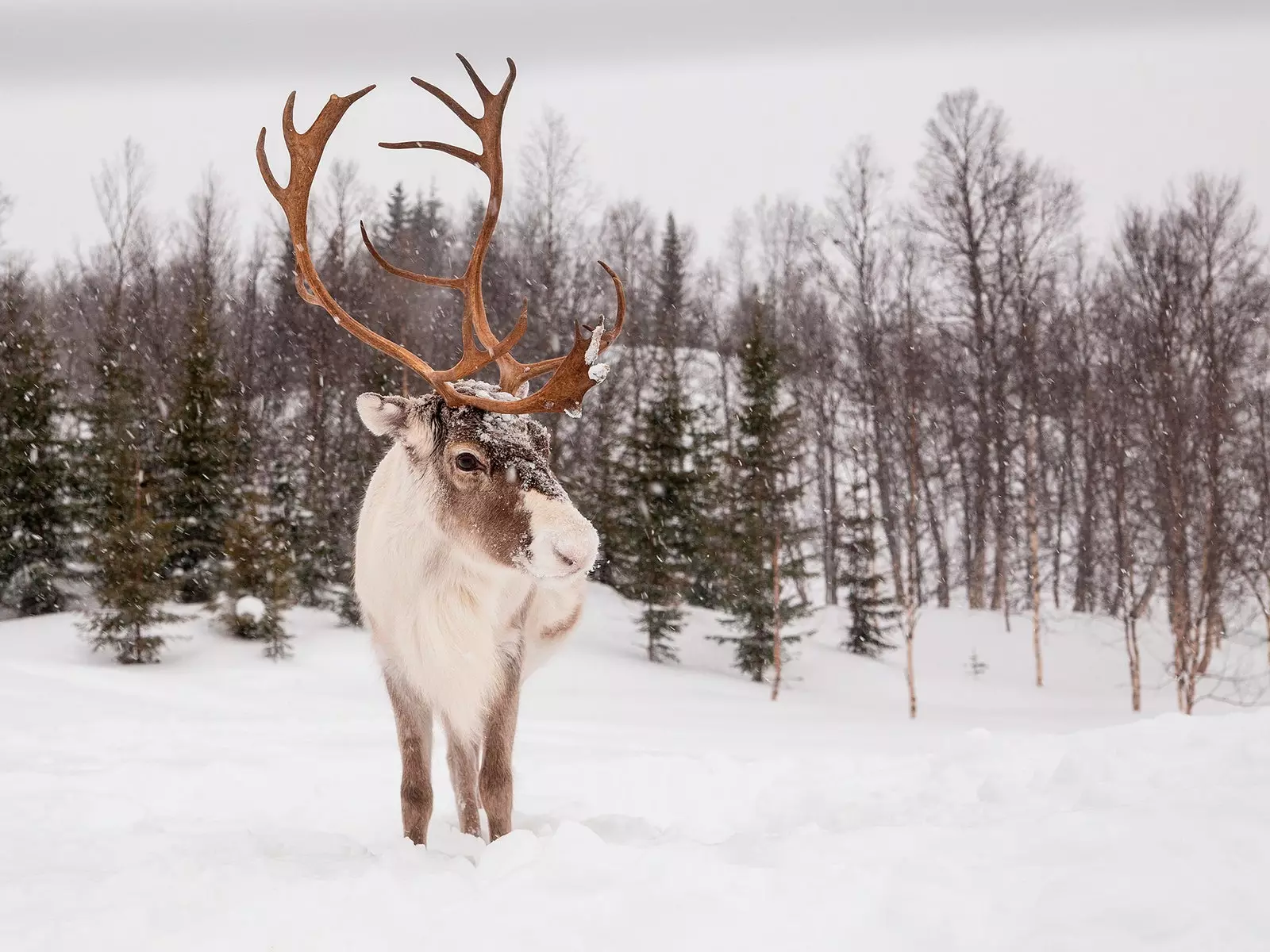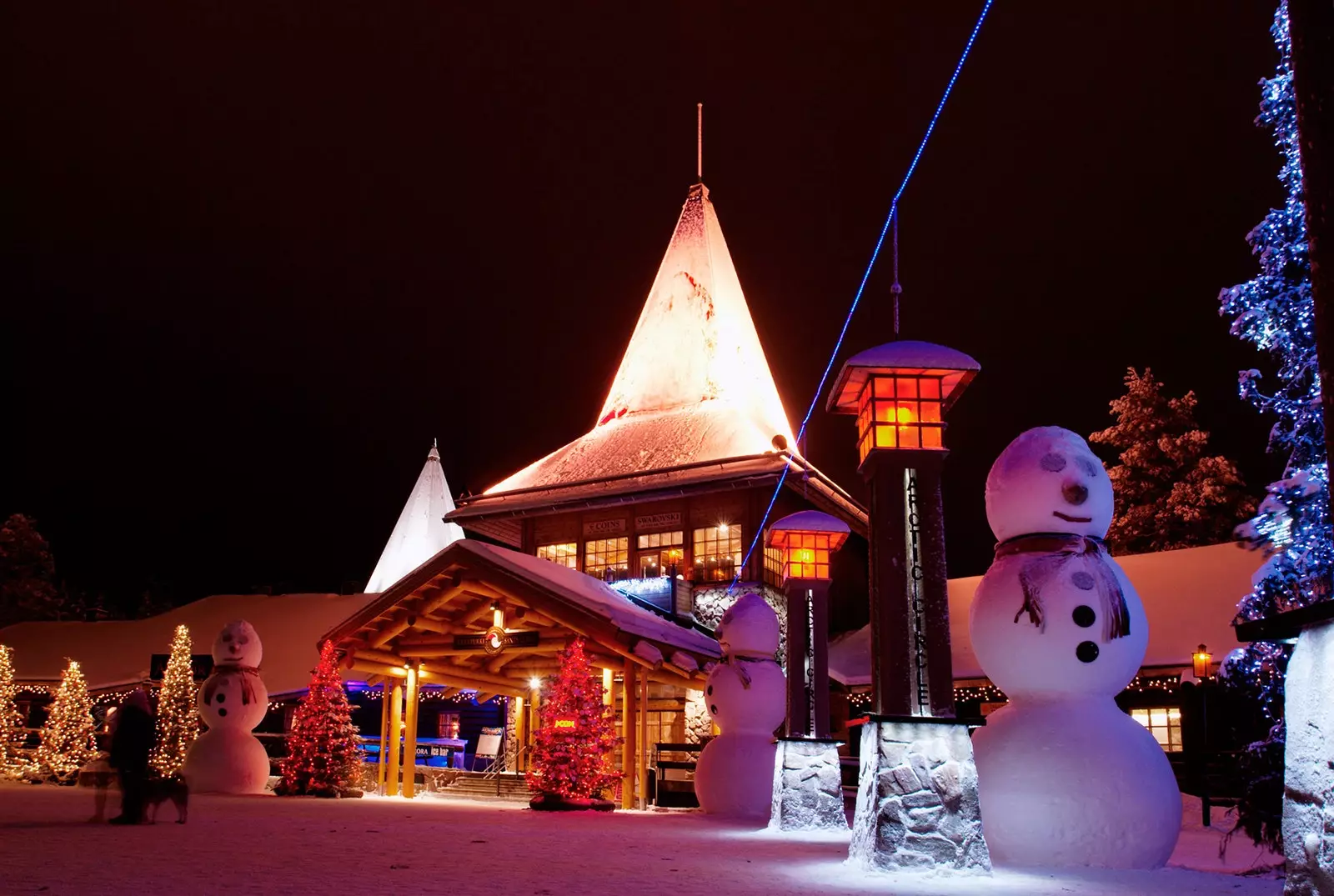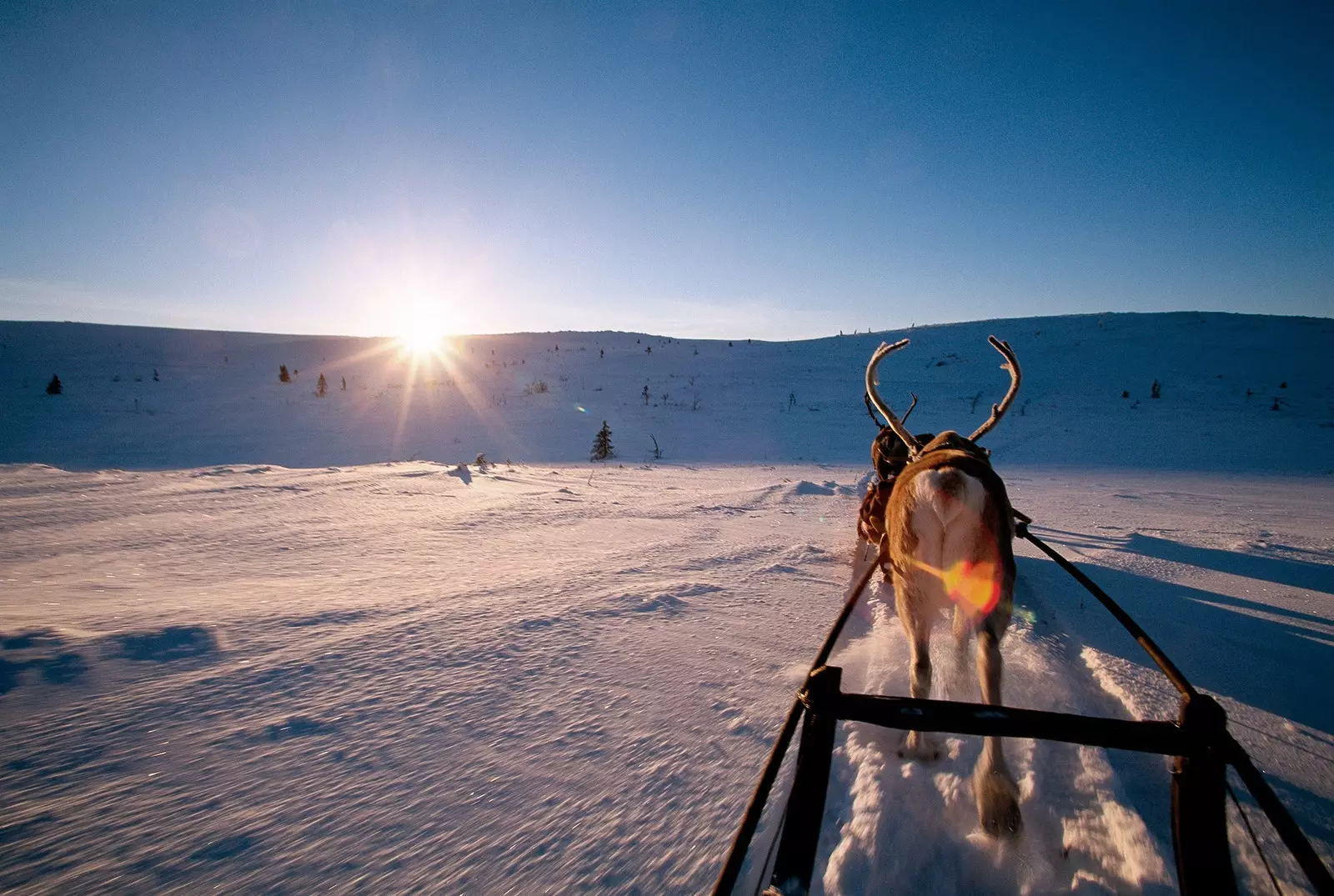
Everything you've always wanted to know about Santa's home
Santa Claus officially lives 8 kilometers from the city center of Rovaniemi, in Finnish Lapland, in a "housing" called Santa Claus Village. Coordinates: 66°30′05″N 25°44′05″E.
Just The line that marks the Arctic Circle passes through here and you can buy a certificate (€7 per person) that shows that you have crossed it. best to do it in reindeer sleigh.
here you can also obtain a reindeer driving licence. The license costs 5 euros and is valid for 5 years.
The Santa Claus Village (or Santa Claus Village) opened as such in 1985, but the idea of its construction was born in 1950 during Eleanor Roosevelt's visit to Rovaniemi to see how the Marshall Plan was helping the region in the reconstruction process after World War II. From that time, precisely, is the Old Arctic Circle Cottage, also known as Roosevelt's Cottage, which is the oldest building in the village.
Santa Claus receives visitors in his "office" 365 days a year. In 2019 more than half a million people came to see him.
Since it started to work, More than 17 million letters sent by children from 200 countries around the world have arrived at the Santa Claus post office, and from here more than 2 million postcards have been sent. During the busiest months, the volume of letters received in the name of Santa Claus is 30,000 a day.
Santa's wife, Mrs. Claus, has her own wooden house and in it she organizes meetings in which she tells Lappish stories around the fireplace and cooks her traditional Christmas porridge (the recipe is secret) and gingerbread cookies. The visit, which lasts an hour and a half, costs 48 euros.
The elf who helps Santa Claus is 152 years old.
In reality, Santa Claus Village is a business made up of more than 40 companies including the Kotahovi restaurant (which does not serve alcoholic beverages), lodging rentals, and companies that organize Northern Lights tours or reindeer safaris.

Santa's Office
The number of passengers at Lapland airports has multiplied in the last ten years, and in 2018 it reached a record figure of 1.33 million. That same year a total of 3 million overnight stays were recorded. 52% of travelers in Lapland are foreigners, mainly British, German, French and Chinese (the market that is growing the most).
**Lapland is one of the provinces of Finland (it covers 30% of the country's surface) ** but it is also the name of a much larger region that crosses the borders of Sweden, Norway and Russia. Total, It is the size of the sum of Belgium, Holland and Switzerland: 100,367 km2 (includes 1,583 km2 of maritime area and 6,316 km2 of fresh water surface) .
Around 2 million people live in the entire region, of which 5% are Sami, one of the oldest indigenous peoples in Europe, and they prefer to call their land Sápmi, as they consider Lapland a derogatory term. Their entire culture revolves around reindeer.
Reindeer fur is the second warmest in the world –only surpassed by that of the polar bear–. It is about 4 centimeters thick and up to 1,700 hairs per square centimeter. Reindeer hairs are hollow inside , which creates pockets of hot air within the fur. And their antlers are the fastest growing animal bone: up to 2 centimeters in just one day; and can weigh up to 10 kilos. Reindeer males weigh between 90 and 180 kg; females between 60 and 100 kg and live up to 20 years.
The Sami language has about 180 words for snow and ice. Blind, for example, is a snowfield that has been trampled and dug up by reindeer; and Skavvi means the crust of ice that forms on top of the snow at night, after the sun has thawed the top of the snow during the day.
**In Lapland there are not 4 seasons but 8 (and in some places up to 11, almost one per month) **.
In summer, between the months of May and July, the sun does not set at all for 73 days in a row. It is the so-called midnight sun.
In winter, In December and January, there are 51 days in which the sun does not even appear. It is the kaamos or polar night. Kaamos, precisely, refers to one of the 56 special emoticons created by Finland to express local concepts that are difficult to explain otherwise.
February is usually the coldest month, with temperatures of -40ºC. The lowest temperature ever recorded (so far) in Lapland was in Kittilä, on January 28, 1999, when the thermometer read -51.5ºC.

You can get a reindeer driving license
Lake Inari (Finland), with 1,040 km2, is the largest in all of Lapland a and its surface is usually frozen between November and the end of May. Inside there are some 3,000 islands and islets. The most famous of all are Hautuumaasaari (the grave island) , which served as a burial ground for the ancient Sami, and Ukonkivi, home to one of the most important archaeological finds in the entire region.
There are about 50 types of wild berries in the Lappish forests, 37 of them edible. Blueberries, blackberries, raspberries… A single cloudberry has more vitamin C than a whole orange. It is estimated that, each year, between 500,000 and one million tons of berries are picked. Lapland's forest area has been fully certified organic making it the world's largest contiguous area for collecting organic products.
In addition to tourism, industry and the forestry sector, car testing in extreme winter conditions is one of Lapland's main sources of income. They represent around 40 million euros of annual turnover to which, if we add the indirect effects (hospitality, transport, free time activities, etc.), the total value of the sector exceeds one hundred million euros per year.
The port city of Kemi has the northernmost paper mill in the world, owned by forest industry giant Stora Enso.
